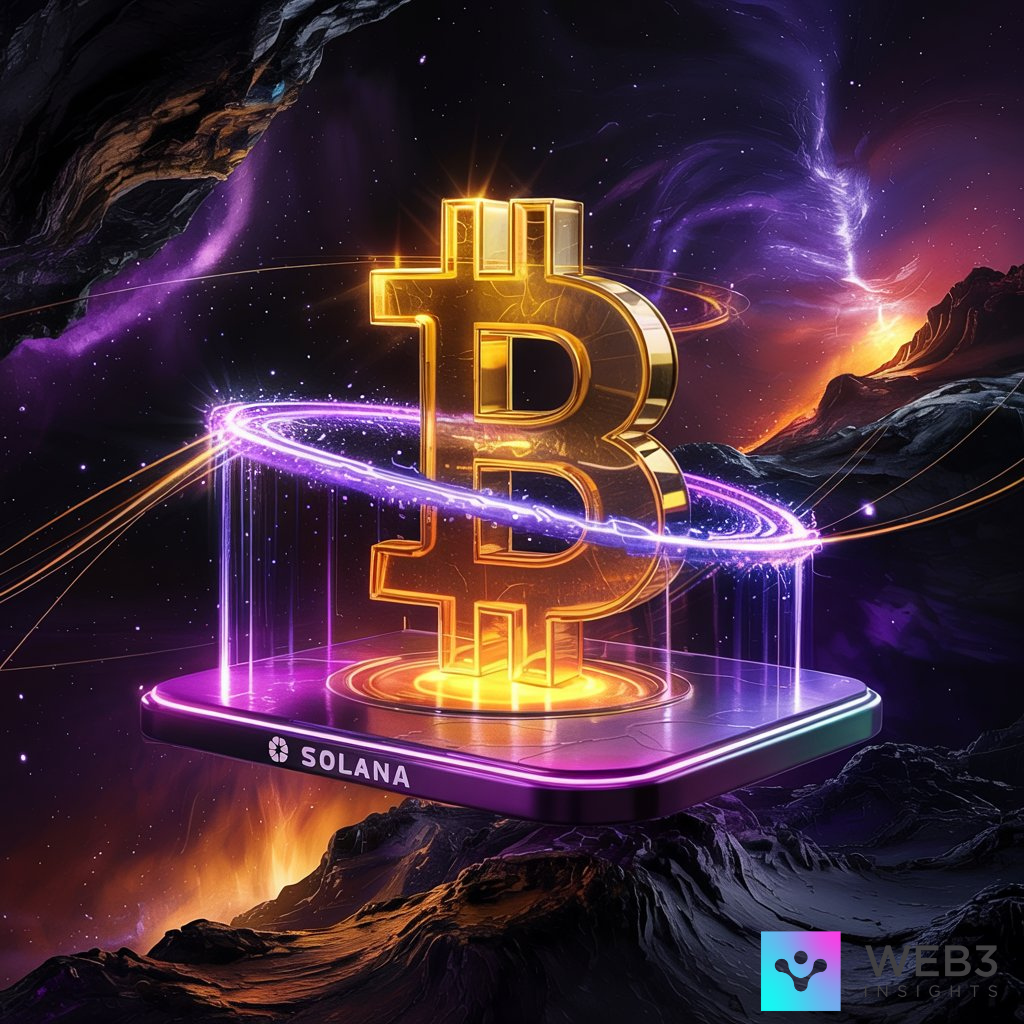Bitcoin on Solana is emerging as one of the most exciting narratives in crypto today. With over a decade of history, powerful security, and a fixed supply, Bitcoin remains the most trusted and battle-tested store of value in the entire crypto ecosystem. But while Bitcoin is exceptional at holding value, it hasn’t traditionally been great at doing much else.
It doesn’t move fast. It doesn’t plug easily into smart contracts. And it hasn’t been part of the high-velocity DeFi experience that chains like Solana have enabled. Until now.
Welcome to the frontier of Bitcoin on Solana, where BTC’s hard money principles meet Solana’s high-speed, low-cost architecture. It’s about unlocking BTC’s liquidity and getting it off the sidelines and into action.
Why Bring Bitcoin to Solana?
Bitcoin is the most valuable digital asset by market cap, but it’s historically been isolated. On its native chain, Bitcoin lacks the programmability and composability that make newer chains engaging. That means the vast majority of BTC is idle, sitting in cold storage, doing nothing.
Solana, on the other hand, is engineered for throughput. It offers lightning-fast transaction speeds, low fees, and a growing ecosystem of DeFi protocols that are hungry for deep, reliable liquidity. Bringing BTC to Solana means injecting a high-value, low-utility asset into a high-utility, fast-moving system.
But this isn’t theoretical, it’s already happening. Protocols like Zeus Network are pioneering this integration. Zeus is building a permissionless, open-access framework for transferring native BTC into Solana’s DeFi ecosystem.
Zeus is building the infrastructure that allows native BTC to be represented and used within the Solana ecosystem in a trustless manner. It’s not just about wrapping tokens, it’s about building a seamless bridge where Bitcoin can flow freely into high-performance DeFi.
How Does BTC Get to Solana?
It’s important to understand that you don’t literally send Bitcoin to the Solana chain. Instead, BTC is held securely using a protocol or bridge, and then a version of it is created on Solana to represent the same value. This Solana-based version, like zBTC, matches real Bitcoin one-to-one. Once minted, it works just like any other token on Solana: fast, cheap, and ready to use across DeFi protocols.
Unlike early implementations of wrapped BTC on Ethereum, which were often clunky and costly, Solana offers a much smoother user experience. Transactions settle in seconds. Fees are negligible. And more importantly, the infrastructure is being built from the ground up to accommodate Bitcoin’s scale and importance.
Zeus Network stands out here because it isn’t just another bridge; it’s building a permissionless version of Bitcoin-Solana interoperability as a native design principle. With a focus on security, speed, and transparency, Zeus is creating the rails for BTC to become an active participant in Solana’s growing economy.
BTC Liquidity That Can Actually Move
Liquidity is often misunderstood as just “available capital.” But true liquidity means the ability to move assets quickly and cheaply across protocols and platforms. This is where Solana shines, and where Bitcoin on Solana starts to get exciting.
With BTC in Solana’s ecosystem, you’re not just holding it, you can use it. You can deploy it in DeFi strategies, earn yield through lending platforms, use it as collateral for on-chain borrowing, or even integrate it into automated trading strategies. This gives Bitcoin the same dynamism that users have come to expect from assets like SOL or USDC.
And because this happens on Solana, the user experience is smooth. No $50 gas fees. No waiting for network confirmations. Just fast, composable liquidity backed by Bitcoin’s hard value.
Why Now? Why Solana?
Now is a great time for Bitcoin on Solana to gain momentum. Solana has bounced back from its earlier setbacks in 2022, and the network is running smoothly with strong uptime, growing liquidity, and an active developer community.
The Solana network, after weathering its fair share of skepticism in 2022, has re-emerged with consistent uptime, tighter infrastructure, and a surge in developer activity. DeFi protocols are growing more robust, liquidity is deepening, and the network has proven it can handle scale without sacrificing performance..
Secondly, there’s a renewed appetite for cross-chain functionality. The crypto market has realized that no single chain will win it all. Interoperability is the future, and Solana is positioning itself as the fastest lane for cross-chain liquidity, especially with native assets like BTC.
Thirdly, infrastructure like Zeus Network is finally here. This isn’t theoretical anymore. Real, usable bridges are being deployed. Bitcoin on Solana is no longer an idea, it’s becoming reality.
Challenges Worth Watching
As with any cross-chain development, risks exist. Bridging assets always introduces trust assumptions, whether custodial, smart contract-based, or decentralized. Maintaining the peg between BTC and its wrapped representation is critical. If it breaks, confidence in the system breaks with it.
That’s why transparency, auditability, and decentralization are so important. Protocols like Zeus earn user trust not just through promises, but through provable integrity. So far, the team has been focused on doing exactly that.
It’s also worth mentioning that Bitcoin fanatics may push back against wrapping or bridging. But this isn’t about replacing Bitcoin, it’s about expanding its utility while respecting its principles. The original BTC remains untouched and secure. The wrapped version simply extends its reach.
Final Thoughts: The BTC-Solana Bridge Is More Than Technical
Bitcoin on Solana isn’t just a convenience play, it’s a narrative shift. It’s a bet that Bitcoin doesn’t have to be passive. It can play a bigger role in the modern DeFi landscape without sacrificing its integrity.
Protocols like Zeus Network are leading the way, not just with bridges, but with infrastructure that reimagines what Bitcoin can do when it moves at Solana speed.
In a multi-chain future, liquidity will flow to where it’s most useful. And with Bitcoin finally tapping into Solana’s capabilities, we’re witnessing a new chapter in crypto’s evolution, where store-of-value meets utility, and digital gold gets the velocity it always lacked.








